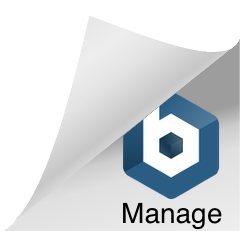In this approach, there is no need to make large investment outlays or commit to lengthy loans to acquire the assets necessary for the company’s operations or growth. A key goal of any OpEx workflow is to streamline operations and minimize expenses. To https://accounting-services.net/capex-and-opex-what-is-the-difference/ achieve this, businesses typically use some combination of process automation, outsourcing, and workforce optimization. By automating repetitive tasks, businesses can reduce the need for human labor, while outsourcing can help to reduce fixed costs.
- When you hear OPEX, your executives are speaking about operating expenditures.
- If your company builds a new building, that will appear on the balance sheet as an asset.
- CapEx and OpEx are treated differently from an income tax standpoint and businesses prefer one to the other based on various reasons.
- Operating expenses represent the day-to-day expenses designed to keep a company running.
Capital expenditures are funds or expenses that are used to purchase fixed assets and will be used beyond the accounting year in which they are bought. While operating expenses are the daily expenses needed to run a company smoothly. Operating expenditures are the recurring expenses that businesses must pay to keep the organization running. OPEX include day-to-day expenses like employee wages, equipment rentals, laptops, and office supplies. While CAPEX is intended to increase the long-term value of the business, OPEX is about keeping the lights on and the business productive.
Head To Head Comparison Between Capex VS Opex (Infographics)
In addition, these expenditures are recorded in different types of financial reports. Operational expenditures are generally reported on the company’s income statement. Capital expenditures are generally reported on the balance sheet, as well as the profit and loss statement. Here, we examine the main differences between capital expenditures and operational expenditures, including their respective approval workflows. We also discuss how workflow automation can impact these two core areas of enterprise management.
In this Top 10, we highlight the most innovative and promising startups from various industries. At The Startup CFO we understand the importance of making informed and strategic financial decisions. Our mission is to provide the support necessary for your company to successfully navigate this complex financial landscape. This is where the role of an external CFO team comes in to set the financial direction of your company, which is essential today, as we are seeing throughout this article.
- Note that operational expenditures are often referred to as operational expenses or operating expenses.
- Justifying a switch from CapEx to OpEx can also be difficult, as CIOs, CTOs, and the finance department appreciate the tax benefits of CapEx.
- Adding an OPEX item takes less time when compared with CAPEX as long as the item is included in the budget.
- For example, a shoe manufacturer can buy land to build a factory, and all costs related to the construction of that new facility are capital expenditures.
Both capital expenditures and operating expenses represent outlays by the company. Both are usually acquired in exchange for cash and may go through a similar purchasing process. This includes solicitation of a bid, contracting, legal review, orchestration of financial payment, and receipt of the purchase.
CapEx Requests and Approvals
At the end of each accounting year, $4,000 (the reduced value) is reflected by the depreciation expense in the financial statement. Capital expenditures are not fully deducted in the accounting period they were incurred in, but rather depreciated to spread the cost over the useful life of the asset. To finance these large purchases, companies will often take out loans or sell bonds. Because it is a long-term investment, CapEx is usually spread out over several years, sometimes even decades. This allows companies to gradually recoup their costs and avoid taking on too much debt all at once. Understanding the tax implications of capital and operating expenses can help you save some money and avoid any unnecessary headaches.
CapEx vs. OpEx – What Do Most Businesses Choose?
The company/business incurs operational expenses to maintain the smooth running of daily business activities. Converting its inventory, which includes raw materials, into a final product incurs costs for the business. For example, the electricity cost to run the machine and the labor cost to convert flour, sugar, etc. (raw materials) into a biscuit (final product).
In software, capital expenditure is the cost of purchasing and setting up software infrastructure. On the other hand, operational expenditure is the ongoing cost of software maintenance, licensing, cloud computing services, etc. Cash flow considerations are the ultimate balancing act of any business!
Shifting IT operations to an outside vendor
The cost of the vehicle is depreciated over its useful life, and the acquisition is initially recorded to the company’s balance sheet. Firms make a separate budget for their Capex vs Opex to keep a check on their total expenditures. If you are trying to determine CapEx vs OpEx, it isn’t always an “either-or” situation. Businesses need to decide what model each expense would fall into, fully knowing the trade-offs.
CapEx and OpEx are two sides of a coin, and it isn’t possible to rate one better than the other. Both categories are different ways businesses classify costs and are equally crucial for a business’s growth. Fixed expenses cover staff payroll, accounting fees, legal fees, and the purchase of office supplies, to name a few.
As a result, many businesses try to keep their OpEx under control by carefully monitoring their spending and looking for ways to improve efficiency. Both are abbreviations for two different types of costs that mark long-term and short-term expenses. It’s no secret that running a business implies having a lot of different expenses. To keep things clear and organized, businesses usually split them into different categories like rent, raw materials, wages, and the general cost of growth. Both operating and capital costs are important components of a business’s financial planning.
While CapEx refers to long-term investments in assets, working capital refers to the short-term liquidity available to a business, calculated as current assets minus current liabilities. You might notice that we use “capital expenditure” and “operating expense”, instead of calling both expenditures or both expenses. Apple’s balance sheet aggregates all property, plant, and equipment into a single line. However, more information on property, plant, and equipment is often required to be reported within the notes to the financial statements. In this case, this supplementary information explains that Apple has gross PPE of $109 billion, with almost $79 billion made up of machinery, equipment, and internal-use software. In this way, OpEx represents a core measurement of a company’s efficiency over time.
So, we’ve found that the decision between CapEx and OpEx is a critical factor in the financial management of any company, whether it’s an established industry or a growing startup. In these cases, asset ownership does not provide a significant competitive advantage. Therefore, the recommendation is to opt for OpEx expenditures to improve business flexibility, agility and scalability. These essentially focus on the level of expenses that must be incurred to achieve revenue, which is ultimately a business’s primary objective. Both expenditures can be similarly planned while tracking them separately.




